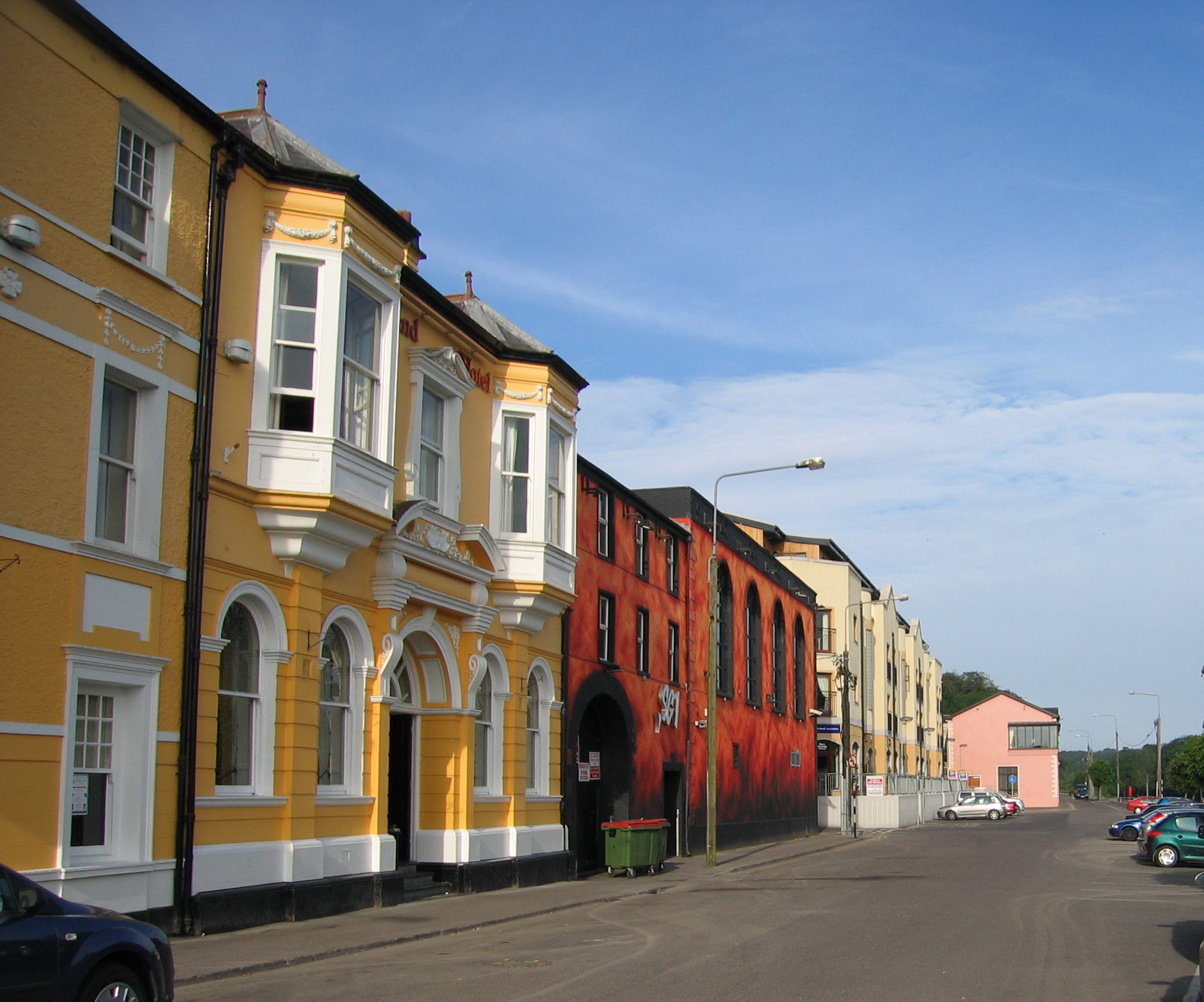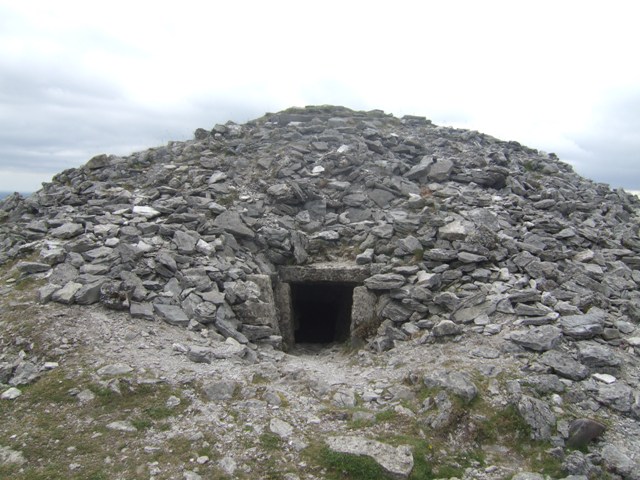|
Carntierna
Carntierna is a ringfort and National Monument located in County Cork, Ireland. Location Carntierna is located atop Corrin Hill in the Nagle Mountains, 2.4 km (1.5 mi) south of Fermoy. History and description Carntierna was built between 500 BC and AD 500, during Ireland's Iron Age; it is one of only three "hillforts" in north Cork. The name is Irish for "Tigernac's cairn", named after Tigernac Tetbannach, legendary King of Munster in the time of Conchobar mac Nessa Conchobar mac Nessa (son of Ness) is the king of Ulster in the Ulster Cycle of Irish mythology. He rules from Emain Macha (Navan Fort, near Armagh). He is usually said to be the son of the High King Fachtna Fáthach, although in some stories .... A great cairn lies atop the hill, supposedly the king's burial-place. References {{Reflist National monuments in County Cork Archaeological sites in County Cork ... [...More Info...] [...Related Items...] OR: [Wikipedia] [Google] [Baidu] |
Fermoy
Fermoy () is a town on the Munster Blackwater, River Blackwater in east County Cork, Ireland. As of the 2022 census of Ireland, 2022 census, the town and environs had a population of approximately 6,700 people. It is located in the barony (Ireland), historical barony of Condons and Clangibbon, and is in the Dáil constituency of Cork East (Dáil constituency), Cork East. The town's name is of Irish origin and refers to a Cistercian abbey founded in the 13th century. This abbey is believed to have been founded by Domnall Mór Ua Briain, King of Thomond. History Ancient The ringfort at Carntierna on top of Corrin hill, 2.4 km (1.5 mi) south of Fermoy, was an important Iron Age site. Medieval times A Cistercian abbey was founded in Fermoy in the 13th century. At the dissolution of the monasteries during the Tudor period, the abbey and its lands passed through the following dynasties: Sir Richard Grenville, Robert Boyle and William Forward. However, the site could ha ... [...More Info...] [...Related Items...] OR: [Wikipedia] [Google] [Baidu] |
County Cork
County Cork () is the largest and the southernmost Counties of Ireland, county of Republic of Ireland, Ireland, named after the city of Cork (city), Cork, the state's second-largest city. It is in the Provinces of Ireland, province of Munster and the Southern Region, Ireland, Southern Region. Its largest market towns are Mallow, County Cork, Mallow, Macroom, Midleton, and Skibbereen. , the county had a population of 584,156, making it the third-List of Irish counties by population, most populous county in Ireland. Cork County Council is the Local government in the Republic of Ireland, local authority for the county, while Cork City Council governs the city of Cork and its environs. Notable Corkonians include Michael Collins (Irish leader), Michael Collins, Jack Lynch, Mother Jones, Roy Keane, Sonia O'Sullivan, Cillian Murphy and Graham Norton. Cork borders four other counties: County Kerry, Kerry to the west, County Limerick, Limerick to the north, County Tipperary, Tipperary ... [...More Info...] [...Related Items...] OR: [Wikipedia] [Google] [Baidu] |
Republic Of Ireland
Ireland ( ), also known as the Republic of Ireland (), is a country in Northwestern Europe, north-western Europe consisting of 26 of the 32 Counties of Ireland, counties of the island of Ireland, with a population of about 5.4 million. Its capital city, capital and largest city is Dublin, on the eastern side of the island, with a population of over 1.5 million. The sovereign state shares its only land border with Northern Ireland, which is Countries of the United Kingdom, part of the United Kingdom. It is otherwise surrounded by the Atlantic Ocean, with the Celtic Sea to the south, St George's Channel to the south-east and the Irish Sea to the east. It is a Unitary state, unitary, parliamentary republic. The legislature, the , consists of a lower house, ; an upper house, ; and an elected President of Ireland, president () who serves as the largely ceremonial head of state, but with some important powers and duties. The head of government is the (prime minister, ), ... [...More Info...] [...Related Items...] OR: [Wikipedia] [Google] [Baidu] |
Ringfort
Ringforts or ring forts are small circular fortification, fortified settlements built during the Bronze Age, Iron Age and early Middle Ages up to about the year 1000 AD. They are found in Northern Europe, especially in Ireland. There are also many in South Wales and in Cornwall, where they are called rounds. Ringforts come in many sizes and may be made of stone or earth. Earthen ringforts would have been marked by a circular rampart (a bank and ditch), often with a palisade, stakewall. Both stone and earthen ringforts would generally have had at least one building inside. Distribution Ireland In Irish language sources they are known by a number of names: ' (anglicised ''rath'', also Welsh ), ' (anglicised ''lis''; cognate with Cornish language, Cornish '), ' (anglicised ''cashel''), ' (anglicised ''caher'' or ''cahir''; cognate with Welsh language, Welsh ', Cornish and Breton language, Breton ') and ' (anglicised ''dun'' or ''doon''; cognate with Welsh and Cornish ') ... [...More Info...] [...Related Items...] OR: [Wikipedia] [Google] [Baidu] |
Nagle Mountains
Nagle is a surname. Notable people with this surname include: * Angela Nagle (born 1971), Irish non-fiction writer and academic * Browning Nagle (born 1968), American football quarterback * Courtney Nagle (born 1982) American tennis player * David R. Nagle (born 1943), member of the US House of Representatives * Don Nagle (1938–1999), American karate grand master * Florence Nagle (1894–1988), British feminist, racehorse trainer and dog breeder * Gary Nagle (born 1974/1975), South African business executive, CEO-designate of Glencore * Jack Nagle (1917–1991), American college basketball coach * Jacob Nagle (1761–1841), British sailor * James Nagle (other), various people * John Nagle, author of RFC896, see Nagle's algorithm * John Nagle (1913–2009), Australian lawyer, soldier and jurist * John Joseph “Jay” Nagle III (born 2000), American basketball player * Kel Nagle (1920–2015), Australian golfer * Leda Nagle (born 1951), Brazilian journalist ... [...More Info...] [...Related Items...] OR: [Wikipedia] [Google] [Baidu] |
Iron Age
The Iron Age () is the final epoch of the three historical Metal Ages, after the Chalcolithic and Bronze Age. It has also been considered as the final age of the three-age division starting with prehistory (before recorded history) and progressing to protohistory (before written history). In this usage, it is preceded by the Stone Age (subdivided into the Paleolithic, Mesolithic and Neolithic) and Bronze Age. These concepts originated for describing Iron Age Europe and the ancient Near East. In the archaeology of the Americas, a five-period system is conventionally used instead; indigenous cultures there did not develop an iron economy in the pre-Columbian era, though some did work copper and bronze. Indigenous metalworking arrived in Australia with European contact. Although meteoric iron has been used for millennia in many regions, the beginning of the Iron Age is defined locally around the world by archaeological convention when the production of Smelting, smelted iron (espe ... [...More Info...] [...Related Items...] OR: [Wikipedia] [Google] [Baidu] |
Cairn
A cairn is a human-made pile (or stack) of stones raised for a purpose, usually as a marker or as a burial mound. The word ''cairn'' comes from the (plural ). Cairns have been and are used for a broad variety of purposes. In prehistory, they were raised as markers, as memorials and as burial monuments (some of which Chambered cairn, contained chambers). In the modern era, cairns are often raised as landmarks, especially to mark the summits of mountains, and as Trail blazing, trail markers. They vary in size from small piles of stones to entire artificial hills, and in complexity from loose conical rock piles to elaborate megalithic structures. Cairns may be painted or otherwise decorated, whether for increased visibility or for religious reasons. History Europe The building of cairns for various purposes goes back into prehistory in Eurasia, ranging in size from small rock sculptures to substantial human-made hills of stone (some built on top of larger, natural hills). ... [...More Info...] [...Related Items...] OR: [Wikipedia] [Google] [Baidu] |
King Of Munster
The kings of Munster () ruled the Kingdom of Munster in Ireland from its establishment during the Irish Iron Age until the High Middle Ages. According to Gaelic traditional history, laid out in works such as the ''Book of Invasions'', the earliest king of Munster was Bodb Derg of the Tuatha Dé Danann. From the Gaelic peoples, an Érainn kindred known as the Dáirine (also known as Corcu Loígde and represented today in seniority by the Ó hEidirsceoil) provided several early monarchs including Cú Roí. In a process in the ''Cath Maige Mucrama'', the Érainn lost their ascendancy in the 2nd century AD to the Deirgtine, ancestors of the Eóganachta. Munster during this period was classified as part of ''Leath Cuinn and Leath Moga, Leath Moga'', or the southern-half, while other parts of Ireland were ruled mostly by the Connachta. After losing Osraige to the east, Cashel, County Tipperary, Cashel was established as the capital of Munster by the Eóganachta. This kindred ruled wit ... [...More Info...] [...Related Items...] OR: [Wikipedia] [Google] [Baidu] |
Conchobar Mac Nessa
Conchobar mac Nessa (son of Ness) is the king of Ulster in the Ulster Cycle of Irish mythology. He rules from Emain Macha (Navan Fort, near Armagh). He is usually said to be the son of the High King Fachtna Fáthach, although in some stories his father is the druid Cathbad, and he is usually known by his matronymic, ''mac Nessa'': his mother is Ness, daughter of Eochaid Sálbuide, King of Ulster. Conchobar was an important figure in the Ulster Cycle, appearing in the Táin Bó Cúailnge and a number of other stories where he is depicted as a good king. Legendary biography Birth There are several versions of how Conchobar was conceived. In the earliest, Ness, daughter of Eochaid Sálbuide, the then king of Ulster, asks the druid Cathbad what it is an auspicious time for. Cathbad replies, "for begetting a king on a queen". There are no other men around, so Ness takes Cathbad to bed and she conceives a son. In a later version, Ness is brought up by twelve foster-father ... [...More Info...] [...Related Items...] OR: [Wikipedia] [Google] [Baidu] |
National Monuments In County Cork
National may refer to: Common uses * Nation or country ** Nationality – a ''national'' is a person who is subject to a nation, regardless of whether the person has full rights as a citizen Places in the United States * National, Maryland, census-designated place * National, Nevada, ghost town * National, Utah, ghost town * National, West Virginia, unincorporated community Commerce * National (brand), a brand name of electronic goods from Panasonic * National Benzole (or simply known as National), former petrol station chain in the UK, merged with BP * National Book Store, a bookstore and office supplies chain in the Philippines * National Car Rental, an American rental car company * National Energy Systems, a former name of Eco Marine Power * National Entertainment Commission, a former name of the Media Rating Council * National Motor Vehicle Company, Indianapolis, Indiana, USA 1900–1924 * National Radio Company, Malden, Massachusetts, USA 1914–1991 * National Supermark ... [...More Info...] [...Related Items...] OR: [Wikipedia] [Google] [Baidu] |





